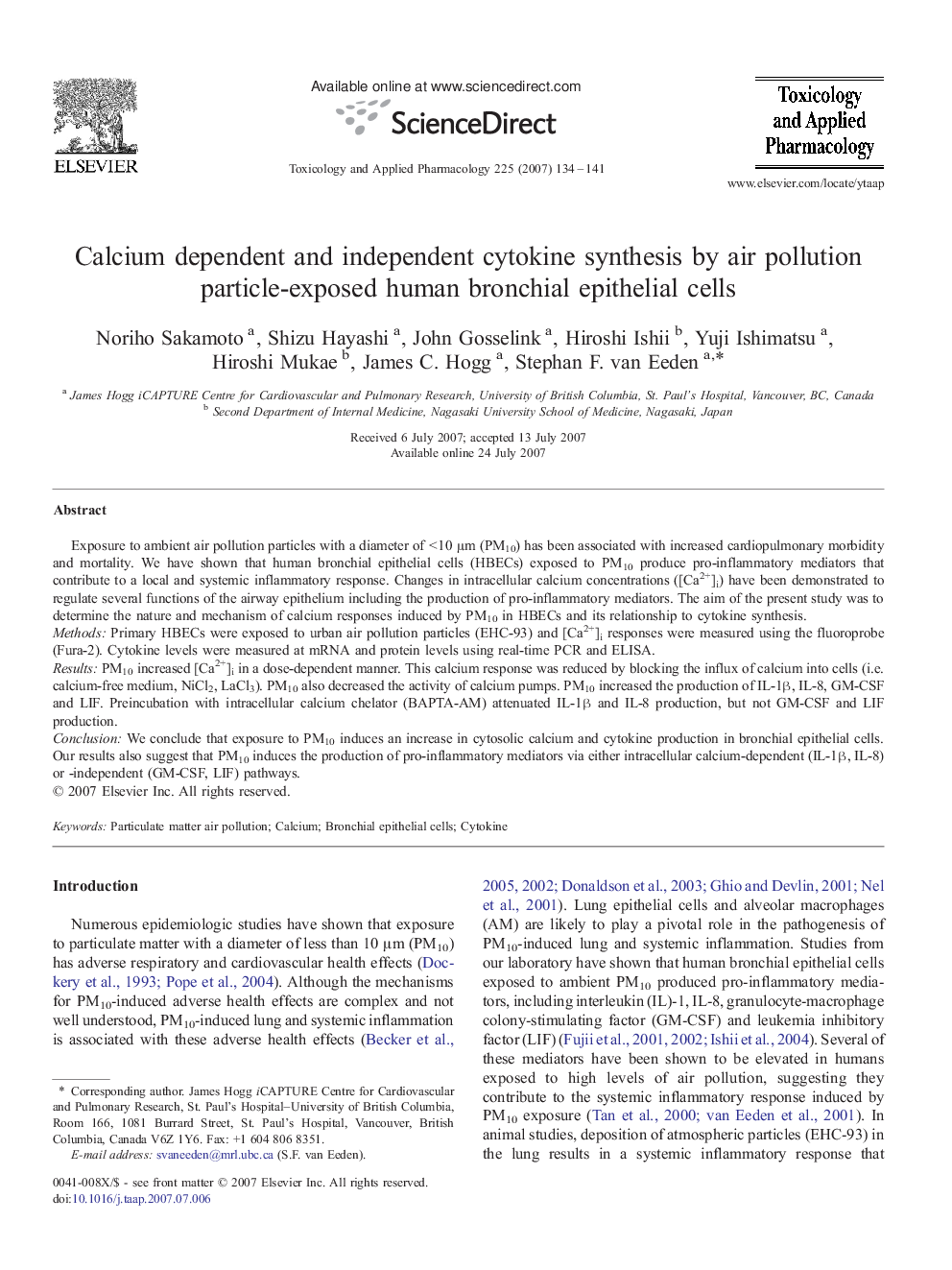| Article ID | Journal | Published Year | Pages | File Type |
|---|---|---|---|---|
| 2571574 | Toxicology and Applied Pharmacology | 2007 | 8 Pages |
Exposure to ambient air pollution particles with a diameter of < 10 μm (PM10) has been associated with increased cardiopulmonary morbidity and mortality. We have shown that human bronchial epithelial cells (HBECs) exposed to PM10 produce pro-inflammatory mediators that contribute to a local and systemic inflammatory response. Changes in intracellular calcium concentrations ([Ca2+]i) have been demonstrated to regulate several functions of the airway epithelium including the production of pro-inflammatory mediators. The aim of the present study was to determine the nature and mechanism of calcium responses induced by PM10 in HBECs and its relationship to cytokine synthesis.MethodsPrimary HBECs were exposed to urban air pollution particles (EHC-93) and [Ca2+]i responses were measured using the fluoroprobe (Fura-2). Cytokine levels were measured at mRNA and protein levels using real-time PCR and ELISA.ResultsPM10 increased [Ca2+]i in a dose-dependent manner. This calcium response was reduced by blocking the influx of calcium into cells (i.e. calcium-free medium, NiCl2, LaCl3). PM10 also decreased the activity of calcium pumps. PM10 increased the production of IL-1β, IL-8, GM-CSF and LIF. Preincubation with intracellular calcium chelator (BAPTA-AM) attenuated IL-1β and IL-8 production, but not GM-CSF and LIF production.ConclusionWe conclude that exposure to PM10 induces an increase in cytosolic calcium and cytokine production in bronchial epithelial cells. Our results also suggest that PM10 induces the production of pro-inflammatory mediators via either intracellular calcium-dependent (IL-1β, IL-8) or -independent (GM-CSF, LIF) pathways.
